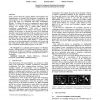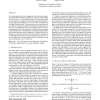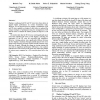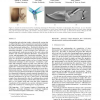VISUALIZATION
2005
IEEE
14 years 5 months ago
2005
IEEE
This paper describes the adaptation and evaluation of existing nestedsurface visualization techniques for the problem of displaying intersecting surfaces. For this work, we collab...
VISUALIZATION
2005
IEEE
14 years 5 months ago
2005
IEEE
The size and resolution of volume datasets in science and medicine are increasing at a rate much greater than the resolution of the screens used to view them. This limits the amou...
VISUALIZATION
2005
IEEE
14 years 5 months ago
2005
IEEE
This paper presents a novel approach for surface reconstruction from point clouds. The proposed technique is general in the sense that it naturally handles both manifold and non-m...
VISUALIZATION
2005
IEEE
14 years 5 months ago
2005
IEEE
VISUALIZATION
2005
IEEE
14 years 5 months ago
2005
IEEE
Little is known about the cognitive abilities which influence the comprehension of scientific and information visualizations and what properties of the visualization affect compre...
VISUALIZATION
2005
IEEE
14 years 5 months ago
2005
IEEE
Arti cial neural networks are computer software or hardware models inspired by the structure and behavior of neurons in the human nervous system. As a powerful learning tool, incr...
VISUALIZATION
2005
IEEE
14 years 5 months ago
2005
IEEE
Displays combining both 2D and 3D views have been shown to support higher performance on certain visualization tasks. However, it is not clear how best to arrange a combination of...
VISUALIZATION
2005
IEEE
14 years 5 months ago
2005
IEEE
VISUALIZATION
2005
IEEE
14 years 5 months ago
2005
IEEE
Understanding and analyzing complex volumetrically varying data is a difficult problem. Many computational visualization techniques have had only limited success in succinctly po...
VISUALIZATION
2005
IEEE
14 years 5 months ago
2005
IEEE
Line primitives are a very powerful visual attribute used for scientific visualization and in particular for 3D vector-field visualization. We extend the basic line primitives w...




